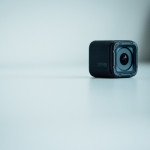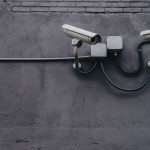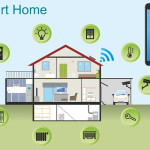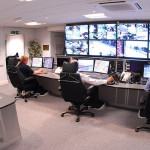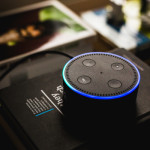Hidden Spy Cameras
Before, spy cameras, like the ones seen in the movies, were merely pipe dreams. The ones that were available never really lived up to the expectation. Fortunately, technology improved over time and hidden cameras became more accessible to everyone.
Thanks to the Internet of Things, Wi-Fi enabled hidden cameras and DVRs are affordable and being used more frequently. You can use these wireless hidden cameras to keep an eye on your children, watch your home while you’re on vacation, or even monitor your business remotely. Hidden spy cameras can be monitored via an app or specialized software that you may access from your smartphone or tablet.
By employing wireless hidden cameras, you can discreetly keep an eye on things. Also, they are less susceptible to tampering as they cannot be easily detected. While visible CCTV surveillance cameras are meant to deter people from wrongdoings, hidden cameras are intended to catch people in the act.
Most hidden cameras are wireless to remain inconspicuous, however, not all are truly wireless. Some are battery powered, while others may need to be prudently plugged in or attached to the electrical system in some way.
What usually confuses people when they see the term “wireless” is that it more commonly refers to the Wi-Fi connection, meaning you don’t have to connect it to any sort of landline or Ethernet cable. Most of these cameras come with their own software and must be configured to your network. IT may sound complicated, but it is no more difficult than connecting any other device to the Internet. However, some spy cameras require that users have an adequate working knowledge of IoT technology to operate them.
Before installing a hidden camera, be sure to review the laws regarding hidden cameras, surveillance, and recording.
Browse our selection of nanny cams, wireless surveillance, and hidden spy cameras online at SecurityCamExpert.com. If you have any questions or need assistance, please call 888-203-6294.
For the latest news and updates, connect with us on Facebook, Google+, Twitter, LinkedIn, and Pinterest!
Night Vision Cameras Vs. Thermal Cameras: Which Is Better For You?
When it comes to securing the perimeter of your home or business, you want a surveillance system that can perform in various conditions. For 24-hour monitoring, night vision cameras have been the popular solution. However, the emergence of thermal cameras has provided a more advanced solution. Learn more about the different types of night vision cameras and how thermal cameras differ from them.
Low-Light Cameras
These are also known as day and night cameras and electronically and automatically adjust lighting capture settings based on the time of day to produce optimal video images. During the day, IR cut filters are used to “cut out” IR illumination, allowing for color images. At night, the filter is removed entirely to allow the maximum amount of visible and IR light to reach the sensor and produce a monochrome image. The downside to these cameras is that they are completely dependent on lighting conditions. That is, too much light or no light at all will result in unusable images. Thus, the amount of visible light available drastically affects the image.
IR Cameras
IR cameras have a lens that is surrounded by LEDs which emit a beam of near-infrared energy to bounce off objects in its field of view. The image sensor is then able to create a picture; however, distance plays a crucial role in performance. Because the reflected IR light can only reach so far, these cameras are often limited to short-range applications.
Night Vision Cameras
Night vision goggles (NVG) and cameras capture visible light photons. As the photons penetrate a photocathode tube (which acts as an image intensifier), they are converted to amplified electrons that pass through a phosphorous screen and converts them back to visible light to create a picture (often in a greenish hue). Because these devices need just the right amount of visible light to function, they are virtually useless when there is ample light outside (ex. twilight) or in conditions where light is blocked (ex. smoke) or no light is available.
Thermal Cameras
Rather than performing based on light availability, these cameras produce video surveillance images based on the measurement of the electromagnetic heat radiation emitted by all objects and individuals. Their performance is unaffected by bright lights, complete darkness, foliage, and light fog. No matter how small, differences in heat are picked up and produce images with high contrast, which are essential to the success of video analytics and intrusion detection. These cameras may be better suited for properties which require strict perimeter security (ex. oil and gas industries, data centers, mines, power stations), and are often combined with other layers of protection (ex. fence sensors, microwaves, PTZ cameras).
Thermal cameras also boast long-range detection capabilities, thus, reducing the number of cameras needed. They can also be a good substitute for fences where fence installation is not possible. For example, ports and oil refineries have acres of water and land to secure and monitor. Thermal imaging and video analytics can create “virtual fence” and can be a more feasible and affordable solution than installing a physical barrier.
Do you use night vision cameras or thermal cameras to protect your property? Share with us on Facebook, Google+, Twitter, LinkedIn, and Pinterest.
If you need help deciding which night vision or other security cameras will best suit your surveillance needs, please feel free to contact us at 888-203-6294 or visit SecurityCamExpert.com today!
Text-To-911: What You Should Know
Imagine getting a notification from your security camera system that movement is detected in your home. If you are out of the house, you can check the feed and call 911. But what if you get the notification when you are home alone? You can try to escape, but if that is not feasible, your next best bet would be to lock yourself in a room and hide. In this situation, calling 911 could possibly give your location away, but what if you could send a text to 911 to discreetly summon law enforcement?
If you live in Pomona or elsewhere in the Los Angeles County, as of December 1, 2017, you are able take advantage of Text-To-911. This convenient option gives hearing and speech-impaired individuals, along with those in situations in which it is too dangerous to call 911, a potentially lifesaving option. But the Federal Communications Commission (FCC) reminds everyone to “Call if you can — text if you can’t“.
Here are the FCC’s guidelines for contacting 911:
- If you can, always contact 911 by making a voice call.
- If you are deaf, hard of hearing or speech disabled, and Text-To-911 is not available, use a TTY or telecommunications relay service, if available.
- If you send a text to 911 and the service is not yet available in your area, you will receive a bounce-back message advising “text is not available please make a voice call to 9-1-1” or use telecommunications relay service (for persons who are deaf, hard of hearing, or have a speech disability). Note: Bounce-back messages are intended to minimize your risk of mistakenly believing that a text to 911 has been transmitted to an emergency call center.
- Location accuracy varies by carrier and should not be relied upon. Be prepared to give your location.
- Text-To-911 service will not be available if the wireless carrier cannot ascertain a location of the device sending the message.
- Text-To-911 is not available if you are roaming.
- A text or data plan is required to place a text to 911.
- Photos and videos cannot be sent to 911 as they cannot be received at the 911 center at this time.
- Text messages should be sent in plain language and not contain popular abbreviations (SMH, LOL, ICYMI) or emojis, as they will not be recognized.
- Text-To-911 cannot be sent to more than one person. Do not send your emergency text to anyone other than 911.
- Text must be in English only – there is currently no language interpretation for text available (still in development).
- Remember that the FCC’s Text-To-911 rules do not apply to text messaging applications that do not support texting to and from U.S. phone numbers.
- Text messaging applications that only support texting with other app users or texting via social media are not required to support Text-To-911.
As we all know, texting can be extremely dangerous in certain situations, but in others, such as Text-To-911, it could save lives.
Protect your property with quality CCTV surveillance cameras and equipment from SecurityCamExpert.com. Browse our stock online or call 888-203-6294. Find us on Facebook, Google+, Twitter, LinkedIn, and Pinterest for the latest news and updates.
Why You Need IP Security Cameras
Security camera systems have made great advances over the years. From traditional analog CCTV technology to IP networking, security camera quality and features have improved to provide better monitoring and security. Some of these enhanced benefits include higher resolutions resulting in clearer images, fewer cameras covering larger areas, and thus, a lower total cost of ownership. Many businesses and homeowners are opting to trade up to network IP security cameras, network video recorders (NVRs) and cloud-based storage for more convenient and affordable security.
Network IP Cameras & Assisted Living Communities
Aside from protecting homes and company headquarters, assisted living communities can also reap the benefits of installing network IP security cameras.
In the way that security cameras deter burglars from targeting your property, in assisted living facilities, the aim is to deter abuse and neglect. By strategically placing these cameras in and around the facility, family members can put their worries at ease by reviewing stored footage to ensure that no mistreatment is taking place and that the staff is providing the proper care. For facility managers, video surveillance footage can provide evidence should an employee or resident be charged with abusive behavior.
Network IP cameras can also help the staff keep a closer eye on residents or patients. For those residents at risk for falls, staff can potentially prevent falls and injuries, or respond faster to those incidents. Medical equipment such as oxygen tubes may get dislodged, and staff can get to the rooms faster to fix the problems. In the case of memory units, the entrances and exits can be closely monitored to prevent residents from wandering outside of supervised areas, and can help protect the facility from possible intruders.
These security cameras can also prevent employee theft. Although we would rather think that this is uncommon, it is not unheard of for residents to report their belongings stolen. Whether these claims are accurate or not, cameras provide evidence to prove what really happened. Also, facilities often find that supplies may go missing. To counter these losses, IP cameras can document the incident or prevent it from occurring in the first place.
Of course, opponents of these security measures stand firm in their belief that it makes it more difficult to recruit staff and that employees will have trouble making sound decisions for fear of families challenging their actions. The problem with this stance is that numerous other careers and industries are under constant surveillance with little to no issues arising. Proponents of employee surveillance believe these measures will help workers to make better decisions and avoid any questionable situations.
Why Should You Upgrade To IP Security Cameras?
As stated, upgrading to IP security cameras comes with a myriad of enhanced benefits. Aside from the obvious video quality improvement, IP cameras are able to utilize your existing CAT5 or CAT6 Ethernet cabling, saving time and money on installation. The intelligent video features include facial recognition, motion detection, audio detection and people-counting, to name a few. Also, because they are connected to the Internet, owners are able to remotely view live video, search archived footage, and receive alerts via any PC, tablet, or smart phone.
Choosing the Right IP Security Camera
Because the various IP camera choices on the market, it can be a bit overwhelming. Here are some important features you should know about before choosing the best IP cameras for your needs.
- Camera Types
There are three design options for IP cameras: bullet, dome and PTZ (Pan, Tilt, Zoom). As inferred by their name, bullet cameras resemble a bullet shaped and best suited for directional monitoring. They typically do not possess the capability to zoom in or move. Dome cameras are shaped like domes and ambiguously monitor areas, aiding in its role of deterring misconduct. “Speed domes” spin quickly to capture a broader range of images. Lastly, PTZ cameras are ideal for covering large areas. These cameras can move and capture different angles, thus, delivering the work of several fixed-point cameras in one single device. PTZ surveillance cameras may also be preprogrammed to scan an area or may be controlled remotely.
- Resolution
IP camera resolution is the amount of visual data that can be captured and is measured in megapixels. It is often provided in horizontal and vertical pixel dimensions (ex. A camera that has 1280 x 1024 resolution is 1.3MP because 1280 x 1024 = 1,310,720 or 1.3MP). A higher resolution means the camera can capture more data, resulting in improved video clarity.
- Power over Ethernet (PoE)
This allows you to transmit power over the data cable, which can run up to 100 feet. This will save you money and decrease installation limitations. In addition, the PoE standard 802.3af supports higher power ratings needed for motorized cameras (ex. PTZ).
- Wide Dynamic Range
If you are monitoring an area that has challenging lighting conditions, you will want a camera that has good wide dynamic range (WDR). This will control the backlight and remove shadows to produce adequate footage in difficult environments.
- IR LED
Infrared (IR) LED lighting is like night vision, allowing cameras to capture clear footage in low to no light conditions. IP cameras can see infrared light and when wavelengths reflect back, it is as if the room is illuminated and the camera can record video. Night vision capabilities improve with more IRLEDs and longer ranges.
- Weather/Vandal Resistance
If you are using your surveillance cameras outdoors, be sure to choose weatherproof and “vandal resistant” cameras, which will often be IP66 rated and IK10 rated respectively. This will safeguard against water or dirt, which can interfere with your recordings or damage your equipment. Some cameras even offer thermostatic controls, which will help to prevent condensation forming over the lens.
When upgrading to IP cameras within your home, business, or in assisted living communities, be sure to evaluate your needs and review your options before making a final decision. If you need assistance, please feel free to call us at 888-203-6294 to speak with a representative and request a free quote. You may also visit SecurityCamExpert.com to browse our inventory of network IP cameras and surveillance equipment.
Connect with us on Facebook, Google+, Twitter, LinkedIn, and Pinterest for the latest news and updates!
Smart Homes: Proceed With Caution
Some people may opt for traditional security cameras for home security, but the landscape is changing. The emergence of connected devices has spurred the popularity of smart homes and the Internet of Things (IoT). However, as we connect more technologies and devices, we may be putting ourselves at a greater risk.
Internet of Things
Most people have heard of the term, but those who haven’t may not even realize they are a part of it. Whether you own a smartphone, smart TV or even a tablet, you are connected to the Internet of Things. And if you are investing in smart home appliances, you are absolutely connected.
Because of this, smart homes tend to be more susceptible to threats thanks to the lax cybersecurity measures (if at all) of most smart appliances. Even if other devices, such as smart thermostats, garage doors, or fire alarms, may have stronger security measures, if they share the same network as other, less secure appliances they are vulnerable to exposure and attacks.
In order to protect users and their own reputations, smart appliance manufacturers must take cybersecurity measures seriously. For your own safety, research the products you are interested in and be sure that their security measures meet or exceed your expectations.
Basic Security
One of the main problems with smart security technology is the do-it-yourself approach. Most consumers are drawn to DIY solutions because they seem to be more cost-effective, user-friendly, and cut out the need for professional installation. Unfortunately, mistakes made by the user could further compromise their security.
While these smart technologies indeed promote security and convenience, you may want to tread lightly. Consider the pros and cons of transitioning your home into a smart home and be sure to do your research and take the necessary precautions to ensure that your devices and systems are as secure and up-to-date as possible.
If you are weary of these smart security measures, you can always go the traditional route with security cameras and CCTV surveillance systems. Visit SecurityCamExpert.com to shop our selection or call 888-203-6294 for more information and a free quote! You can also find us on Facebook, Google+, Twitter, LinkedIn, and Pinterest.
Artificial Intelligence For Video Surveillance
There’s no denying that video surveillance technology has come a long way over the years. From grainy videos in its early stages to the quality software and clarity today, video surveillance continues to make great strides and advancements.
History
The goal of security cameras and surveillance systems is to capture, detect, and deter any unlawful behavior in and around homes, businesses, and public areas. Before, installing a security camera system was a costly and laborious job, involving lots of wires and cables running throughout the building. As technology progressed, security cameras became more accessible and affordable, allowing more users the opportunity to invest in their security. Now there are numerous DIY solutions that make it easy for homeowners to install and set up on their own security systems.
For businesses, implementing a team of people to actively monitor security cameras at all times was once the only option. Now, much of the monitoring aspect of security and surveillance systems can be automated. Rather than having the mundane task of watching numerous monitors, security cameras now have the ability to detect any suspicious or abnormal behaviors and will alert a security officer as necessary.
While we have seen the security industry flourish over the years, this is just the tip of the iceberg. Our technology will continue to advance and amaze us in ways we never thought possible.
Artificial Intelligence
Artificial intelligence (AI) in video surveillance enables the “smart” features we now see with security cameras. In general, security cameras enable us to monitor situations in real-time or go back to review previous footage. With the integration of AI technology, not only can we monitor in real-time, but potential issues can be identified before they become real problems.
With the emergence of video analytics, footage can be analyzed immediately to identify any abnormal activity or threats early on. This technology helps the software ‘learn’ what is normal in order to identify unusual behavior and is meant to make up for human error, rather than replace human monitoring all together.
While it was always a goal to integrate AI and video surveillance, the technology, from a hardware standpoint, was not ready. One of the issues that needed to be addressed was decreasing the power demand to a level low enough that would allow the technology to be embedded into the cameras.
As more cameras emerge with new AI technologies and processes, we will begin to see more advanced features including crowd density monitoring, facial recognition, stereoscopic vision, and behavior analysis.
Behavior analysis in particular is what a lot of tech companies are focusing on. By implementing a technology that can identify and recognize precursor patterns associated with crimes and other bad behavior, we may be able to greatly improve public safety and security.
A great example comes from the West Japan Railway, where it was found that 60% of people hit by trains in Japan were intoxicated. They have now installed security cameras that can automatically search for and detect signs of intoxication. Sleeping on benches, stumbling, falling, or standing motionless for long periods of time are behaviors that are recognized by the AI system. Human attendees are then notified and sent to check on the person.
Of course, a conversation about video surveillance always includes concerns about privacy. No one wants to feel like they are constantly being monitored, but developers insist that these systems know when to stop collecting information and monitoring. As these technologies continue to develop, you may soon be able to “teach” your system when to record and in which situations recording should halt.
Although it is still in its early stages, AI technology and video surveillance is heading in a positive and exciting direction. Mass adoption may still be a ways to go, but it’s great to see AI being applied in a new setting.
What are your thoughts on artificial intelligence and the video surveillance industry? Share with us on Facebook, Google+, Twitter, LinkedIn, and Pinterest. Browse our selection of security cameras and equipment online at SecurityCamExpert.com. To learn more about our installation services or to request a free quote, please call 888-203-6294.
Connected Technology
Smart home technology – what once was a pipe dream is now coming to fruition. Technically referred to as home automation technology, it is comprised of computer devices that work together to manage various features in your home which would normally be controlled manually. Common examples include remotely controlling lights, thermostats, and even locking and unlocking doors.
As the demand for smart home technology continues to grow, it is important to understand how the technology works and develops to suit our growing needs and wants.
Internet of Things
Smart home technology thrives off of internet connectivity. More and more manufacturers are integrating Wi-Fi enabled remote controls into their products, enabling connection to your wireless home network and thus advancing the development of a “smart” network of appliances known as the Internet of Things (IoT).
Although more people refer to this as “smart technology” rather than IoT, the latter does address the very heart of the draw – the ability to control these devices remotely over the internet, no matter how far the distance.
Smart Security
One of the first places we saw widespread use of smart technologies was in home security systems by way of Internet-accessible security cameras. These security cameras allow homeowners to keep an eye on their property while they are away. As technology advanced, these became more compact and affordable, further spreading their use for home security.
Aside from cameras, more smart security devices emerged and included Wi-Fi enabled electronic deadbolts to remotely grant access to your home, smart lamps to control lighting to ensure you no longer enter a darkened home and smart thermostats to save energy and provide climate-control for a comfortable environment.
Entertainment & More
Security was not the only thing to benefit from IoT. Connected devices can now be found in the kitchen, with smart refrigerators that can remind you when you need to hit the grocery store and smart ovens that allow you to monitor your foods while they cook.
In terms of entertainment, web-enabled televisions can stream digital media content directly to the screen while being controlled by a mobile phone or tablet. Smart devices like Google Home or Amazon Echo can be given verbal commands to control nearly every aspect of your smart home.
As this technology continues to develop, what would you like to see? Share with us on Facebook, Google+, Twitter, LinkedIn, and Pinterest today!
Keep an eye on your home or business with our selection of quality CCTV security cameras and surveillance system packages. Visit us online or call 888-203-6294 to request a free quote or site survey today!
